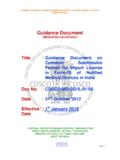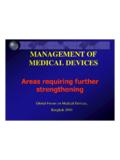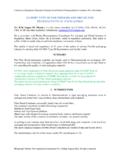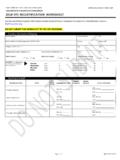Transcription of LED phototherapy for neonatal jaundice Medical …
1 Medical devicesCompendium of innovative health technologies for low-resource settings2013 see disclaimer on following pageHealth problem addressedNeontal jaundice (hyperbilirubinemia) occurs in at least 60% of term infants. If untreated, it can cause irreversible brain damage. phototherapy equipment for treatment currently available have frequent bulb replacement needs, expensive bulb replacement costs and experience frequent breakdown in remote, rural descriptionThe device emits light through an array of high-powered light emitting diodes (LEDs). These LEDs have been specifically selected to emit a narrow wavelength of blue light (dominant wavelength 458nm) that maximises the rate of bilirubin breakdown. The arrangement of the LEDs along with the optics have been designed to provide uniformity of light on the patient, while minimizing unwanted spill and glare outside the treatment surface.
2 The device provides the ability to cater the treatment to the patient by allowing the caregiver to choose a high intensity (45 w/nm/cm^2) or low intensity (22 w/nm/cm^2) s claims of products benefitsMost phototherapy devices on the market use tubelights or compact fluorescent (CFL) bulbs to provide phototherapy . Many of these do not provide adequate intensity or uniform coverage. Moreover, these tubelights have to be replaced frequently - every 1000 hours. This is often not feasible due to high replacement costs and availability in device is easy to use for the caregiver, has a low total cost of ownership, is designed to be rugged and reliable, and provides excellent clinical outcomes. The uniformity, intensity and wavelength of emitted light results in a 28% increase in bilirubin breakdown.
3 It utilizes only 20W of power, which is great for electricity savings as well as for the environment. It can be used with most commercially available photovoltaic systems, or potentially car batteries connected to inverters. It is simple to use with only two buttons - on/off and high/low. Lamps last for 50,000 hours, which provides 6 years of night and day for low-resource settingsThe device is specifically designed for low resource settings. It is designed to be rugged: all moving mechanical parts such as fans have been removed from the lamphead. The cost of ownership is highly minimized by having LEDs that last 50,000 hours - 6 years of night & day use, and 50 times that of bulbs. It also uses only 20W of power. Over 2000 units have been deployed in low-resource one third of the device s sales in India have been to Tier 2 or 3 towns.
4 It has been awarded the Oxford Analytica validation Healthymagination certificate for product that improves access, betters quality and reduces cost of care. The Federation of Indian Chambers of Commerce and Industry have awarded it the prestigious Healthcare Excellence Award in 2012 for innovation to solve pressing healthcare challenges in stepsThe device is simple to use. After installation, it has to be plugged into mains power (100-240V). There are then only two buttons - On/Off and High/Low to vary the intensity. Black screws on top can be unfastened to remove the lamp head for placement on an incubator. The height of the lamp can be adjusted by unscrewing a ring in center of the statusIt conforms with the requirements of Medical Devices Directive 93/42/EEC - BSI CE 0086 mark.
5 It is also certified ISO 13485. It has US FDA 510K clearance (K120168). It is ROHS compliant and a WEEE certificate is and maintenanceUser: Physician, nurse, midwifeTraining: NoneMaintenance: NoneEnvironment of useSettings: Rural, urban settings, primary (health post, health center), secondary (general hospital), tertiary (specialized hospital)Requirements: Continuous power supply (100-240V)LED phototherapy for neonatal jaundiceCountry of originIndiaContact details Ashish Gupta Email Telephone +91 80 408 85941 Web specificationsDimensions (mm): 530 x 550 x 1700 (maximum height)Weight (kg): 10 Consumables: NoneLife time: 7 yearsShelf life: 2 years (6 months without any operation)Retail Price (USD): 1200 with considerable variation between countriesList price (USD).
6 1500 Other features: Mobile, capital equipmentYear of commercialization: 2011 Currently sold in: 122 countries. Emerging market countries include Bahamas, Bolivia, Costa Rica, Czech Republic, Ecuador, Egypt, Gabon, Ghana, Hungary, India, Indonesia, Mexico, Moldova, Myanmar, Peru, Philippines, Poland, Romania, South Africa, Thailand, Tunisia, of innovative health technologies for low-resource settings2011 - | | for inclusion in the compendium has been evaluated by WHO and external technical advisers listed in the Acknowledgements. However, the evaluation has been solely based on a limited assessment of data and information submitted in the developers applications and, where available, of additional sources of evidence, such as literature search results or other publicly available information.
7 There has been no rigorous review for safety, efficacy, quality, applicability, nor cost acceptability of any of the technologies. Therefore, inclusion in the compendium does not constitute a warranty of the fitness of any technology for a particular purpose. Besides, the responsibility for the quality, safety and efficacy of each technology remains with the developer and/or manufacturer. The decision to include a particular technology in the compendium is subject to change on the basis of new information that may subsequently become available to WHO. WHO will not be held to endorse nor to recommend any technology included in the compendium. Inclusion in the compendium solely aims at drawing stakeholders attention to innovative health technologies, either existing or under development, with a view to fostering the development and availability of, and/or access to, new and emerging technologies which are likely to be accessible, appropriate and affordable for use in low- and middle-income countries.
8 WHO does not furthermore warrant or represent that:1. the list of innovative health technologies is exhaustive or error free; and/or that2. the technologies which are included in the compendium will be embodied in future editions of the compendium; and/or that 3. the use of the technologies listed is, or will be, in accordance with the national laws and regulations of any country, including but not limited to patent laws; and/or that4. any product that may be developed from the listed technologies will be successfully commercialized in target countries or that WHO will finance or otherwise support the development or commercialization of any such disclaims any and all liability and responsibility whatsoever for any injury, death, loss, damage, use of personal data, or other prejudice of any kind whatsoever that may arise as a result of, or in connection with, the procurement, distribution and/or use of any technology embodied in the compendium, or of any resulting product and any future development whose technology has been included in the compendium shall not, in any statement of an advertising, commercial and/or promotional nature.
9 Refer to their participation and/or inclusion in the compendium. In no case shall the latter use the WHO name and/or the emblem, or any abbreviation thereof, in relation to their business or otherwise.















